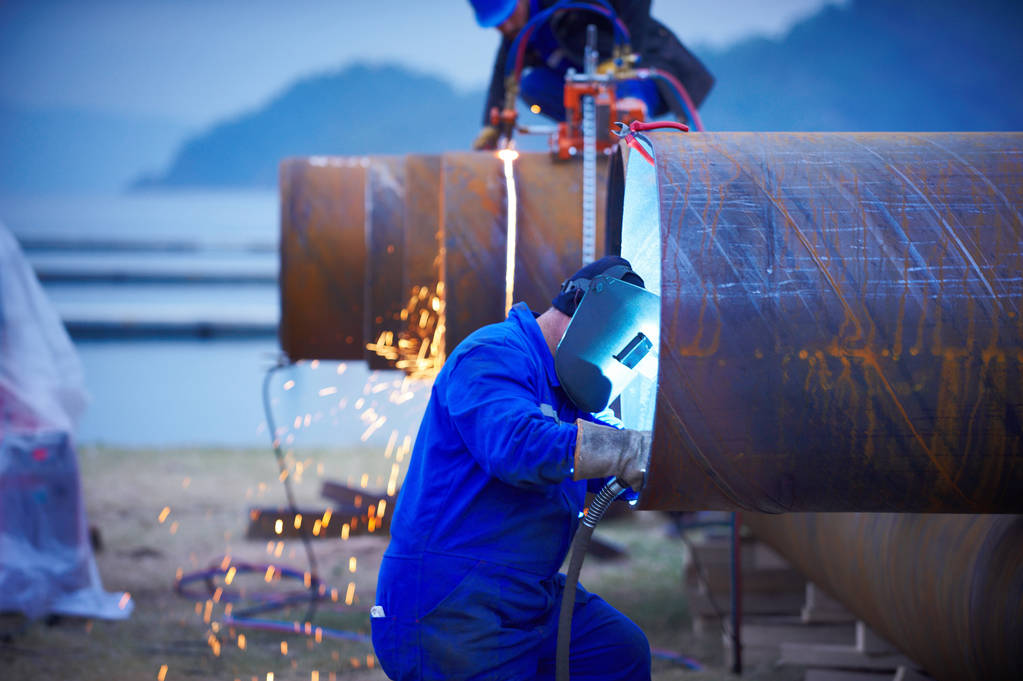Submerged Arc Welding - practical steel pipe welding technology
 Sep 23, 2022|
Sep 23, 2022| View:236
View:236The submerged arc welding process is the most ideal choice for important applications in pipelines, pressure vessels and tanks, rail manufacturing and major construction. It has the simplest form of single wire, double wire structure, tandem double wire structure and multi-wire structure.
Submerged arc welding basics
The submerged arc welding process is a requirement for heavy duty industrial applications suitable for pipes, pressure vessels and tanks, locomotive construction, heavy construction/excavation. Ideal for industries that require high productivity, especially where very thick materials are involved, many benefits can be derived from the submerged arc welding process. Its high deposition rate and travel speed can have a significant impact on worker productivity, efficiency and production costs, which is one of the key advantages of the submerged arc welding process. Other benefits include excellent weld chemistry and mechanical properties, minimal arc visibility and lower welding fumes, improved comfort in the work environment, and good weld shape and toe line.
Submerged arc welding is a wire feeding mechanism that uses granular flux to separate the arc from the air. As the name suggests, the arc is buried in the flux, which means that when the parameters are set, with the subsequent outflow of a layer of flux, the arc is seen. missing. The welding wire is fed continuously by the torch that moves along the weld. Arc heating melts a section of welding wire, part of the flux and base metal, forming a molten pool, which condenses to form a weld covered with a layer of slag. The thickness of the welding material is in the range of 1/16"-3/4", and it can pass 100% penetration welding through a single pass. Choose the right combination of wire and flux.

Selection of Flux and Wire
Choosing the right flux and wire for a particular submerged arc welding process is critical to achieving the best results with that process. While the submerged arc welding process alone is highly efficient, productivity and efficiency can even be improved based on the wire and flux used. Flux not only protects the weld pool, but also contributes to the improvement of the mechanical properties and productivity of the weld. Flux formulation is a huge influence on these factors, affecting current carrying capacity and slag release. Current carrying capacity means that the highest possible deposition efficiency and high quality weld profile can be obtained. The slag release of a particular flux affects flux selection, as some fluxes are more suitable for some solder designs than others. Flux selection options for submerged arc welding include active and neutral types of welding. A fundamental difference is that active fluxes change the chemistry of the weld, while neutral fluxes do not. Active flux is characterized by containing silicon and manganese. These elements help maintain weld tensile strength at higher heat inputs, help welds remain smooth and smooth at higher travel speeds and provide good slag release. Overall, activated flux can help reduce the risk of poor solder quality, as well as expensive post-solder cleaning and rework. But keep in mind that active flux is usually best for single or double pass soldering. Neutral fluxes are better for large, multi-pass welds because they help avoid the formation of brittle, crack-sensitive welds.
There are many wire options for submerged arc welding, each with pros and cons. Some wires are formulated for welding at higher heat inputs, while others are specifically designed to have alloys that aid the flux in weld cleaning. Note that the chemistry of the wire and heat input interact to affect the mechanical properties of the weld. Productivity can also be greatly improved through filler metal selection. For example, using a metal-cored wire with a submerged arc welding process can increase deposition efficiency by 15% to 30% compared to using a solid wire, while also providing a wider, shallower penetration profile. Due to its high travel speed, metal-cored wire also reduces heat input to minimize the risk of weld distortion and burn through.






